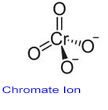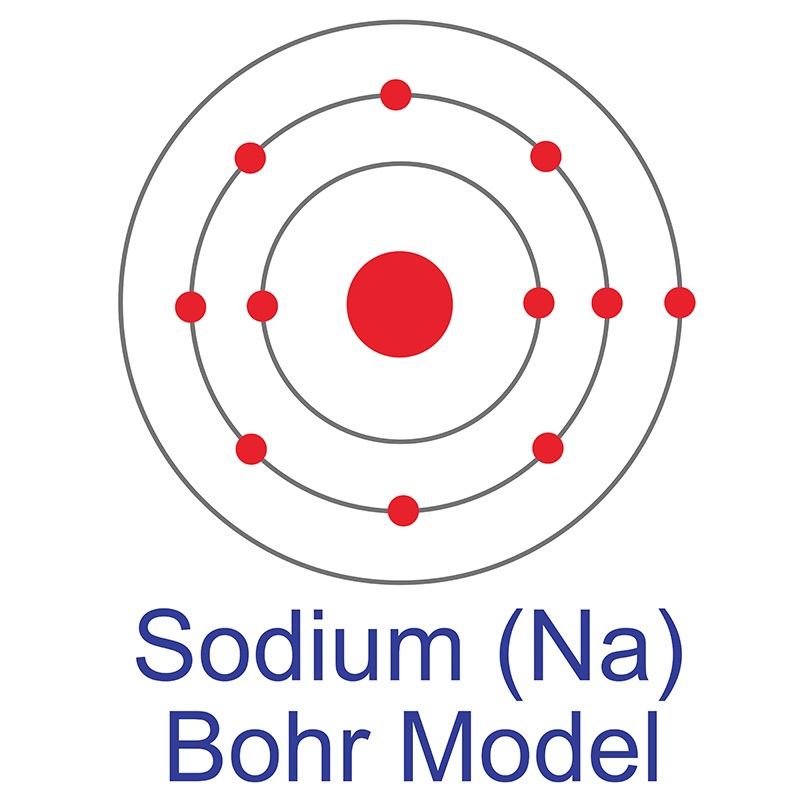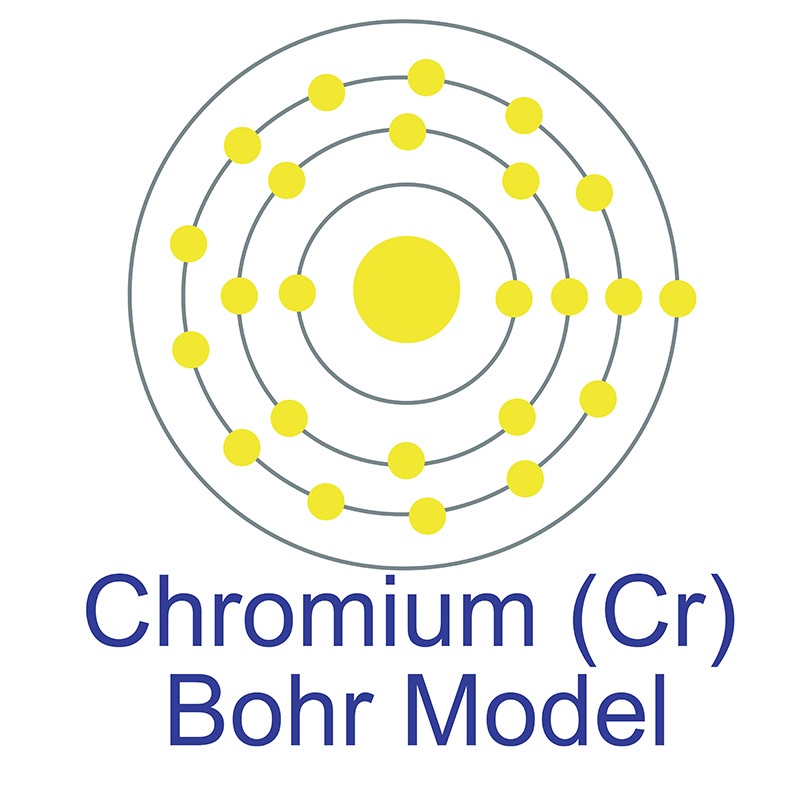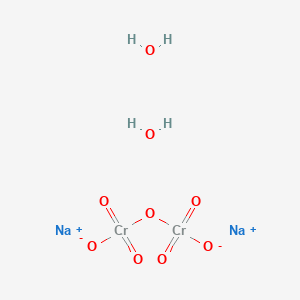SECTION 1. IDENTIFICATION
Product Name: Sodium Dichromate Dihydrate
Product Number: All applicable American Elements product codes, e.g. NA-CRAT2-02-C.2HYD
, NA-CRAT2-03-C.2HYD
, NA-CRAT2-04-C.2HYD
, NA-CRAT2-05-C.2HYD
CAS #: 7789-12-0
Relevant identified uses of the substance: Scientific research and development
Supplier details:
American Elements
10884 Weyburn Ave.
Los Angeles, CA 90024
Tel: +1 310-208-0551
Fax: +1 310-208-0351
Emergency telephone number:
Domestic, North America: +1 800-424-9300
International: +1 703-527-3887
SECTION 2. HAZARDS IDENTIFICATION
Signal Word
Danger
Hazard Statements
May intensify fire; oxidizer
Toxic if swallowed
Harmful in contact with skin
Causes severe skin burns and eye damage
May cause respiratory irritation
May cause an allergic skin reaction
Fatal if inhaled
May cause allergy or asthma symptoms or breathing difficulties if inhaled
May cause genetic defects
May cause cancer
May damage fertility. May damage the unborn child
Causes damage to organs through prolonged or repeated exposure
Precautionary Statements
Prevention
Obtain special instructions before use
Do not handle until all safety precautions have been read and understood
Use personal protective equipment as required
Wash face, hands and any exposed skin thoroughly after handling
Do not eat, drink or smoke when using this product
Do not breathe dust/fume/gas/mist/vapors/spray
Use only outdoors or in a well-ventilated area
Wear respiratory protection
In case of inadequate ventilation wear respiratory protection
Contaminated work clothing should not be allowed out of the workplace
Wear protective gloves
Keep away from heat/sparks/open flames/hot surfaces. - No smoking
Keep/Store away from clothing/ other combustible materials
Take any precaution to avoid mixing with combustibles
Response
Immediately call a POISON CENTER or doctor/physician
Inhalation
IF INHALED: Remove victim to fresh air and keep at rest in a position comfortable for breathing
Skin
Wash contaminated clothing before reuse
IF ON SKIN (or hair): Take off immediately all contaminated clothing. Rinse skin with water/shower
If skin irritation or rash occurs: Get medical advice/attention
Eyes
IF IN EYES: Rinse cautiously with water for several minutes. Remove contact lenses, if present and easy to do. Continue rinsing
Ingestion
Rinse mouth
Do NOT induce vomiting
Fire
In case of fire: Use CO2, dry chemical, or foam for extinction
Storage
Store locked up
Store in a well-ventilated place. Keep container tightly closed
Disposal
Dispose of contents/container to an approved waste disposal plant
Hazards not otherwise classified (HNOC)
Very toxic to aquatic life with long lasting effects
WARNING! This product contains a chemical known in the State of California to cause cancer, birth defects or other reproductive harm.
SECTION 3. COMPOSITION/INFORMATION ON INGREDIENTS
Component CAS-No Weight %
Sodium dichromate dihydrate 7789-12-0 >95
Sodium dichromate 10588-01-9 -
SECTION 4. FIRST AID MEASURES
General Advice
Immediate medical attention is required. Show this safety data sheet to the doctor in attendance.
Eye Contact
Rinse immediately with plenty of water, also under the eyelids, for at least 15 minutes.
Immediate medical attention is required.
Skin Contact
Wash off immediately with plenty of water for at least 15 minutes. Immediate medical
attention is required.
Inhalation
Move to fresh air. If breathing is difficult, give oxygen. Do not use mouth-to-mouth resuscitation if victim ingested or inhaled the substance; induce artificial respiration with a respiratory medical device. Immediate medical attention is required.
Ingestion
Do not induce vomiting. Call a physician or Poison Control Center immediately.
Most important symptoms/effects
Causes burns by all exposure routes. May cause allergy or asthma symptoms or breathing difficulties if inhaled. May cause allergic skin reaction. . Product is a corrosive material. Use of gastric lavage or emesis is contraindicated. Possible perforation of stomach or esophagus should be investigated: Ingestion causes severe swelling, severe damage to the delicate tissue and danger of perforation: Symptoms of allergic reaction may include rash,
itching, swelling, trouble breathing, tingling of the hands and feet, dizziness,
lightheadedness, chest pain, muscle pain or flushing
Notes to Physician: Treat symptomatically
SECTION 5. FIREFIGHTING MEASURES
Unsuitable Extinguishing Media No data available
Flash Point No data available
Method - No data available
Autoignition Temperature
Explosion Limits
Upper No data available
Lower No data available
Oxidizing Properties Oxidizer
Hazardous Combustion Products
Highly toxic fumes Sodium oxides Chromium oxide
Protective Equipment and Precautions for Firefighters
As in any fire, wear self-contained breathing apparatus pressure-demand, MSHA/NIOSH (approved or equivalent) and full protective gear. Thermal decomposition can lead to release of irritating gases and vapors.
NFPA
Health 4
Flammability 0
Instability 1
Physical Hazards OX
Sensitivity to Mechanical Impact No data available
Sensitivity to Static Discharge No data available
SECTION 6. ACCIDENTAL RELEASE MEASURES
Personal Precautions Use personal protective equipment. Evacuate personnel to safe areas. Ensure adequate
ventilation. Keep people away from and upwind of spill/leak. Avoid dust formation.
Environmental Precautions Do not flush into surface water or sanitary sewer system. Do not allow material to
contaminate groundwater system. Prevent product from entering drains. Local authorities
should be advised if significant spillages cannot be contained. Should not be released into
the environment. See Section 12 for additional ecological information. Avoid release to the
environment. Collect spillage.
Methods for Containment and Clean Up
Sweep up or vacuum up spillage and collect in suitable container for disposal. Avoid dust
formation. Soak up with inert absorbent material. Keep in suitable, closed containers for
disposal. Sweep up and shovel into suitable containers for disposal.
SECTION 7. HANDLING AND STORAGE
Handling
Use only under a chemical fume hood. Wear personal protective equipment. Do not get in eyes, on skin, or on clothing. Do not ingest. Do not breathe vapors/dust. Avoid dust
formation. Keep away from clothing and other combustible materials.
Storage
Keep containers tightly closed in a dry, cool and well-ventilated place. Corrosives area. Do
not store near combustible materials.
SECTION 8. EXPOSURE CONTROLS/PERSONAL PROTECTION
Exposure Guidelines
ACGIH - American Conference of Governmental Industrial Hygienists
Instability 1
OSHA - Occupational Safety and Health Administration
Physical hazards OX
NIOSH IDLH: The National Institute for Occupational Safety and Health Immediately Dangerous to Life or Health
Component ACGIH TLV OSHA PEL NIOSH IDLH
Sodium dichromate dihydrate TWA: 0.05 mg/m3
Engineering Measures Use only under a chemical fume hood. Ensure that eyewash stations and safety showers are close to the workstation location. Ensure adequate ventilation, especially in confined areas.
(Vacated) Ceiling: 0.1 mg/m3 Ceiling: 0.1 mg/m3
IDLH: 15 mg/m3 TWA: 0.0002 mg/m3 Sodium dichromate TWA: 0.05 mg/m3
Personal Protective Equipment
(Vacated) Ceiling: 0.1 mg/m3 Ceiling: 0.1 mg/m3
IDLH: 15 mg/m3 TWA: 0.0002 mg/m3
Revision Date 10-Mar-2014
Eye/face Protection Tightly fitting safety goggles. Face-shield.
Health 4
Skin and body protection Long sleeved clothing.
Respiratory Protection Follow the OSHA respirator regulations found in 29 CFR 1910.134 or European Standard
EN 149. Use a NIOSH/MSHA or European Standard EN 149 approved respirator if
exposure limits are exceeded or if irritation or other symptoms are experienced.
Component Quebec Mexico OEL (TWA) Ontario TWAEV
Sodium dichromate dihydrate TWA: 0.05 mg/m3 TWA: 0.05 mg/m3
TWA: 0.5 mg/m3 TWA: 0.05 mg/m3
Sodium dichromate TWA: 0.05 mg/m3 TWA: 0.05 mg/m3
TWA: 0.5 mg/m3 TWA: 0.05 mg/m3
Hygiene Measures Handle in accordance with good industrial hygiene and safety practice.
SECTION 9. PHYSICAL AND CHEMICAL PROPERTIES
Physical State Solid
Appearance Orange
Odor Odorless
Odor Threshold No data available
pH 3.5-3.9 5% aq.sol
Melting Point/Range 357 °C / 674.6 °F
Boiling Point/Range 400 °C / 752 °F @ 760 mmHg
Flash Point No data available
Evaporation Rate N/A
Flammability (solid,gas) No data available
Flammability or explosive limits
Upper No data available
Lower No data available
Vapor Pressure No data available
Vapor Density N/A
Specific Gravity No data available
Solubility No data available
Partition coefficient; n-octanol/water No data available
Autoignition Temperature
Decomposition Temperature 400 °C
Viscosity N/A
Molecular Formula Cr2 Na2 O7 . 2 H2 O
Molecular Weight 298
SECTION 10. STABILITY AND REACTIVITY
Reactive Hazard Yes
Stability Stable under normal conditions. Oxidizer: Contact with combustible/organic material may
cause fire.
Conditions to Avoid Incompatible products. Excess heat. Combustible material.
Incompatible Materials Organic materials, Acids, Water, Strong bases, Acid anhydrides, Metals, Reducing agents,
Powdered metals, Strong reducing agents, Combustible material
Hazardous Decomposition Products Highly toxic fumes, Sodium oxides, Chromium oxide
Hazardous Polymerization Hazardous polymerization does not occur.
Hazardous Reactions None under normal processing.
SECTION 11. TOXICOLOGICAL INFORMATION
Acute Toxicity
Product Information
Component Information
Component LD50 Oral LD50 Dermal LC50 Inhalation
Sodium dichromate = 46 mg/kg ( Rat ) = 960 mg/kg ( Rabbit ) = 0.124 mg/L ( Rat ) 4 h
Toxicologically Synergistic Products
No data available
Delayed and immediate effects as well as chronic effects from short and long-term exposure
Irritation Causes burns by all exposure routes
Sensitization No data available
Carcinogenicity The table below indicates whether each agency has listed any ingredient as a carcinogen.
Mutagenic Effects Mutagenic
Reproductive Effects Possible risk of impaired fertility.
Developmental Effects No data available.
Teratogenicity Teratogenic effects have occurred in experimental animals.
STOT - single exposure Respiratory system
STOT - repeated exposure Liver Kidney Blood
Aspiration hazard No data available
Symptoms / effects,both acute and delayed
Product is a corrosive material. Use of gastric lavage or emesis is contraindicated.
Possible perforation of stomach or esophagus should be investigated: Ingestion causes
severe swelling, severe damage to the delicate tissue and danger of perforation: Symptoms
of allergic reaction may include rash, itching, swelling, trouble breathing, tingling of the
hands and feet, dizziness, lightheadedness, chest pain, muscle pain or flushing
Endocrine Disruptor Information No data available
Other Adverse Effects See actual entry in RTECS for complete information
SECTION 12. ECOLOGICAL INFORMATION
Ecotoxicity
Very toxic to aquatic organisms, may cause long-term adverse effects in the aquatic environment. The product contains following substances which are hazardous for the environment. May cause long-term adverse effects in the environment. Do not allow material to contaminate groundwater system.
Persistence and Degradability based on information available. May persist
Bioaccumulation/ Accumulation No data available.
Mobility Will likely be mobile in the environment due to its water solubility.
SECTION 13. DISPOSAL CONSIDERATIONS
Waste Disposal Methods Chemical waste generators must determine whether a discarded chemical is classified as a hazardous waste. Chemical waste generators must also consult local, regional, and national hazardous waste regulations to ensure complete and accurate classification.
SECTION 14. TRANSPORT INFORMATION
DOT
UN-No UN3087
Proper Shipping Name OXIDIZING SOLID, TOXIC, N.O.S.
Proper technical name Sodium dichromate dihydrate
Hazard Class 5.1
Subsidiary Hazard Class 6.1
Packing Group II
TDG
UN-No UN3087
Proper Shipping Name OXIDIZING SOLID, TOXIC, N.O.S.
Hazard Class 5.1
Subsidiary Hazard Class 6.1
Packing Group II
IATA
UN-No UN3087
Proper Shipping Name OXIDIZING SOLID, TOXIC, N.O.S.
Hazard Class 5.1
Subsidiary Hazard Class 6.1
Packing Group II
IMDG/IMO
UN-No UN3087
Proper Shipping Name OXIDIZING SOLID, TOXIC, N.O.S.
Hazard Class 5.1
Subsidiary Hazard Class 6.1
Packing Group II
SECTION 15. REGULATORY INFORMATION
All of the components in the product are on the following Inventory lists: X = listed
International Inventories
Component TSCA DSL NDSL EINECS ELINCS NLP PICCS ENCS AICS IECSC KECL
Sodium dichromate dihydrate - - - - - X - X X - Sodium dichromate X X - 234-190-3 - X X X X X
Legend:
X - Listed
E - Indicates a substance that is the subject of a Section 5(e) Consent order under TSCA.
F - Indicates a substance that is the subject of a Section 5(f) Rule under TSCA.
N - Indicates a polymeric substance containing no free-radical initiator in its inventory name but is considered to cover the designated
polymer made with any free-radical initiator regardless of the amount used.
P - Indicates a commenced PMN substance
R - Indicates a substance that is the subject of a Section 6 risk management rule under TSCA.
S - Indicates a substance that is identified in a proposed or final Significant New Use Rule
T - Indicates a substance that is the subject of a Section 4 test rule under TSCA.
XU - Indicates a substance exempt from reporting under the Inventory Update Rule, i.e. Partial Updating of the TSCA Inventory Data Base
Production and Site Reports (40 CFR 710(B).
Y1 - Indicates an exempt polymer that has a number-average molecular weight of 1,000 or greater.
Y2 - Indicates an exempt polymer that is a polyester and is made only from reactants included in a specified list of low concern reactants
that comprises one of the eligibility criteria for the exemption rule.
U.S. Department of Transportation
Reportable Quantity (RQ): N
DOT Marine Pollutant N
DOT Severe Marine Pollutant N
U.S. Department of Homeland Security
This product does not contain any DHS chemicals.
Other International Regulations
Mexico - Grade No data available
Canada
This product has been classified in accordance with the hazard criteria of the Controlled Products Regulations (CPR) and
the MSDS contains all the information required by the CPR
WHMIS Hazard Class C Oxidizing materials
D1A Very toxic materials
D2A Very toxic materials
E Corrosive material
SECTION 16. OTHER INFORMATION
Safety Data Sheet according to Regulation (EC) No. 1907/2006 (REACH). The above information is believed to be correct but does not purport to be all inclusive and shall be used only as a guide. The information in this document is based on the present state of our knowledge and is applicable to the product with regard to appropriate safety precautions. It does not represent any guarantee of the properties of the product. American Elements shall not be held liable for any damage resulting from handling or from contact with the above product. See reverse side of invoice or packing slip for additional terms and conditions of sale. COPYRIGHT 1997-2022 AMERICAN ELEMENTS. LICENSED GRANTED TO MAKE UNLIMITED PAPER COPIES FOR INTERNAL USE ONLY.

 See more Sodium products.
See more Sodium products. The number of electrons in each of Chromium's shells is 2, 8, 13, 1 and its electron configuration is [Ar] 3d5 4s1. Louis Nicolas Vauquelin first discovered chromium in 1797 and first isolated it the following year. The chromium atom has a radius of 128 pm and a Van der Waals radius of 189 pm. In its elemental form, chromium has a lustrous steel-gray appearance.
The number of electrons in each of Chromium's shells is 2, 8, 13, 1 and its electron configuration is [Ar] 3d5 4s1. Louis Nicolas Vauquelin first discovered chromium in 1797 and first isolated it the following year. The chromium atom has a radius of 128 pm and a Van der Waals radius of 189 pm. In its elemental form, chromium has a lustrous steel-gray appearance.  Chromium is the hardest
Chromium is the hardest 
